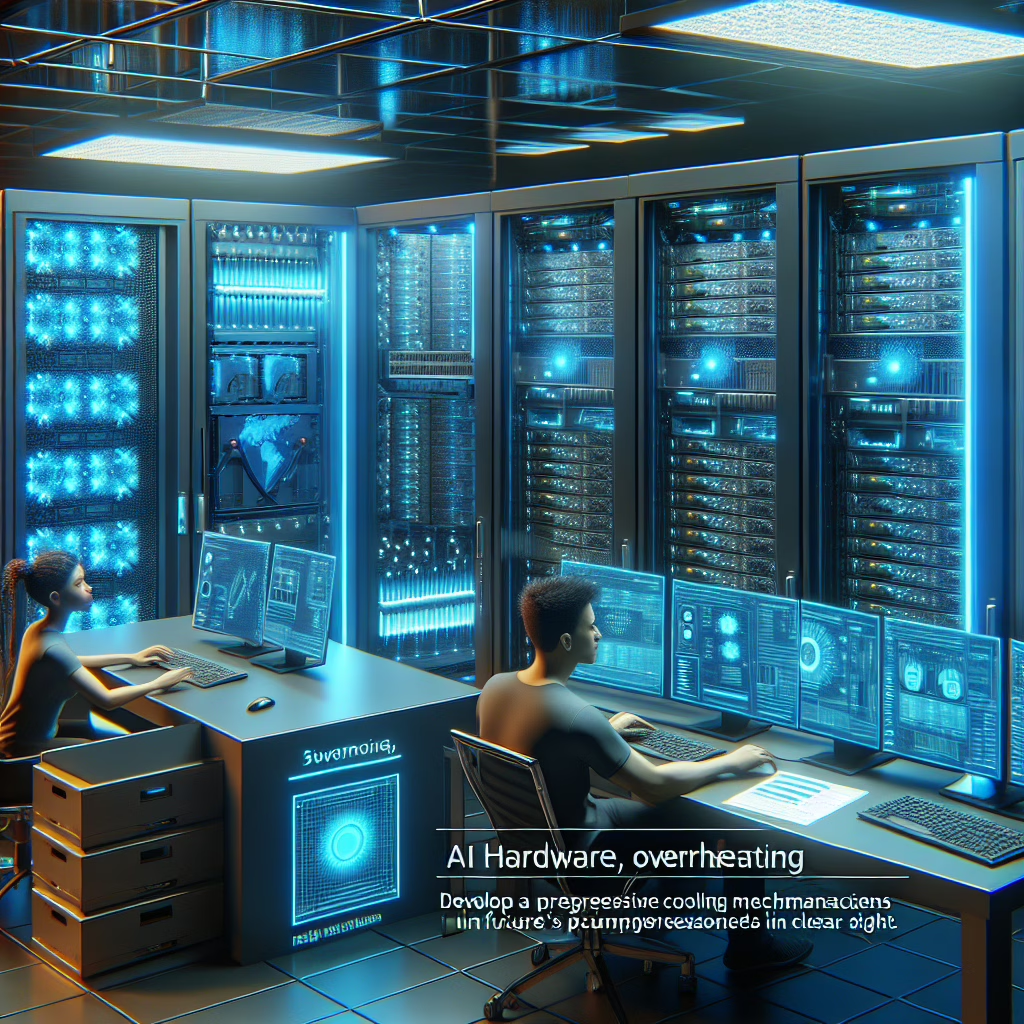As the demand for AI hardware skyrockets, we face an unexpected dilemma: overheating. Yes, it turns out that our beloved AI chips aren’t just smart; they also get hot under pressure! But fear not, because companies like Dell are stepping up to the plate with some cool innovations. Let’s dive into the sizzling world of AI hardware overheating and how Dell thinks it might have the answer.
Why Is AI Hardware Overheating?
It’s a common misconception that only humans can feel the heat of competition. In reality, AI hardware has been sweating it out too. With an exponential rise in processing demands due to more complex algorithms and larger datasets, these chips are working harder than ever. Imagine running a marathon without training—eventually, you’ll need a cold drink!
With great power comes great responsibility—and heat! The continuous operation of powerful GPUs and CPUs generates a lot of heat. If left unchecked, this can lead to performance throttling and even hardware failures. So, while we’re busy creating intelligent machines, we also need to ensure they don’t turn into molten metal blobs.
How Dell Plans to Keep Things Cool
Enter Dell, the knight in shining armor—or rather, in cooling fins! The tech giant is aware of this overheating predicament and has taken matters into its own hands. Their latest innovations include advanced thermal management systems designed specifically for AI workloads. Think of it as putting your AI on a nice ice pack after a hard day of crunching numbers!
Dell’s solutions include innovative airflow designs and liquid cooling technologies that promise to keep temperatures down while maintaining top-notch performance. This means your AI can continue to learn and grow without breaking a sweat. Literally.
But wait! There’s more! Dell is also exploring the use of software solutions that optimize power consumption dynamically based on workload demands. So not only will your AI hardware stay cool as a cucumber, but it will also be energy-efficient—a win-win situation!
The Bigger Picture: Industry Trends
Now, let’s take a step back and look at the broader implications of these advancements in AI hardware cooling. As businesses increasingly rely on AI technologies for everything from data analysis to autonomous vehicles, keeping these systems operational and efficient becomes paramount.
In 2025, it’s projected that the demand for AI applications will continue its upward trajectory—like a rocket ship on its way to Mars! As such, proper thermal management will not only enhance performance but also extend the lifespan of expensive hardware investments.
- Enhanced Performance: Effective cooling leads to fewer slowdowns.
- Longer Lifespan: Well-cooled hardware lasts longer.
- Cost Savings: Lower energy consumption reduces electricity bills.
This trend toward better cooling solutions could inspire other tech companies to follow suit. After all, who doesn’t want their hardware to last longer and perform better? It’s like giving your tech an eternal youth serum!
The Importance of Sustainable Cooling Solutions
As we embrace this sizzling demand for AI technology, we must also consider sustainability. The use of eco-friendly materials in cooling systems can significantly reduce our carbon footprint. If we can make our technology greener while preventing it from becoming a space heater, we’re certainly on the right path.
Sustainable practices in thermal management don’t just help our planet; they also improve efficiency and reduce costs in the long run. It’s like hitting two birds with one stone—except here, we prefer to think of it as giving two thumbs up to Mother Earth!
The Future of AI Hardware: Cooler Than Ever
With companies like Dell leading the charge against overheating issues, the future looks bright—and cool—for AI hardware. As technology evolves, so too do our methods for keeping it functioning optimally.
Ultimately, investing in robust cooling solutions will be essential for any company looking to harness the full potential of artificial intelligence without risking meltdown (literally!). So let’s raise our glasses—filled with ice-cold lemonade—to innovation and sustainability in tech!
What are your thoughts on these advancements? Are you excited about cooler AI hardware? Feel free to share your insights below!
And before we wrap things up, a big shoutout to TechRadar for their insightful article on this topic. Thanks for shedding light on such an important issue!
For additional insights on AI technology and its challenges, make sure to check this article: NPM Users Warned: Malicious Packages and Intel’s New Dual-GPU Video Card.

